#Photographs
Explore tagged Tumblr posts
Link
#married#dearest#trender#psych#photographs#racisim#aj#bimbobooty#struggle#blue lions#staystrong#good place#jack kline
62 notes
·
View notes
Text

Cherry Blossoms 2
#photography#photooftheday#photo#photographer#photographylovers#photogram#photoeveryday#photographers#photograph#photos#instaphoto#photoftheday#photodaily#phototoday#photoart#art#photographs#photographyeveryday#photographylover#photograpy#artwork#artistsoninstagram#artoftheday#artofinstagram#artlover#artdaily#artistic#arts#love#cool
24 notes
·
View notes
Text









Andy Goldsworthy
Ice and snow sculptures and drawings (series). 1980’s to present
#andy goldsworthy#land art#nature installations#ephemeral art#ice#snow#photographs#contemporary#british artist
18 notes
·
View notes
Text




Classic Photographs with Pokemon made by AdamDoesArt
#pokemon#art#nintendo#photography#gameboy#gba#ds#3ds#switch#nintendo switch#anime#retro#gaming#video games#artists#prints#photos#photographs#history#retrogaming
3K notes
·
View notes
Text

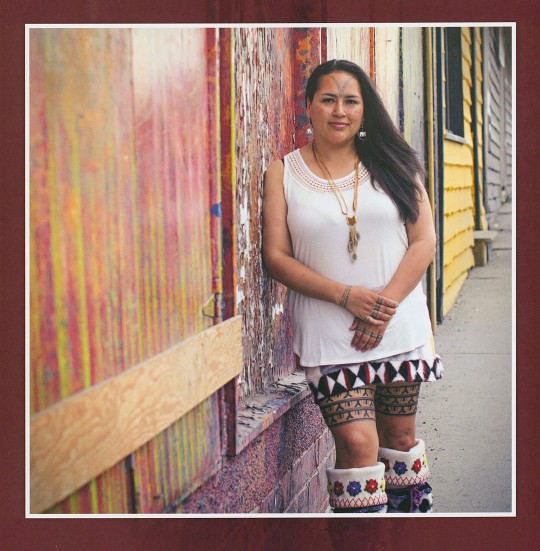
The author, Angela Hovak Johnston.

Johnston and Marjorie Tungwenuk Tahbone, traditional tattoo artist.

Catherine Niptanatiak: "I designed my own, something that represents me and who I am, something that I would be proud to wear and show off, and something that would make me feel confident and beautiful. . . . I have daughters and I would like to teach them what I know. I would like for them to want to practice our traditions and keep our culture alive."

Cecile Nelvana Lyall: "On my hand tattoos, from the top down, the triangles represent the mountains. . . . The Ys are the tools used in seal hunting. . . . The dots are my ancestors. . . . I am so excited to be able to truly call myself and Inuk woman."

Colleen Nivingalok: "The tattoos on my face represent my family and me. The lines on my chin are my four children -- my two older boys on the outside protecting my daughters. The lines on my cheeks represent the two boys and the two girls on either side. The one on my forehead represents their father and me. Together, we live for our children."
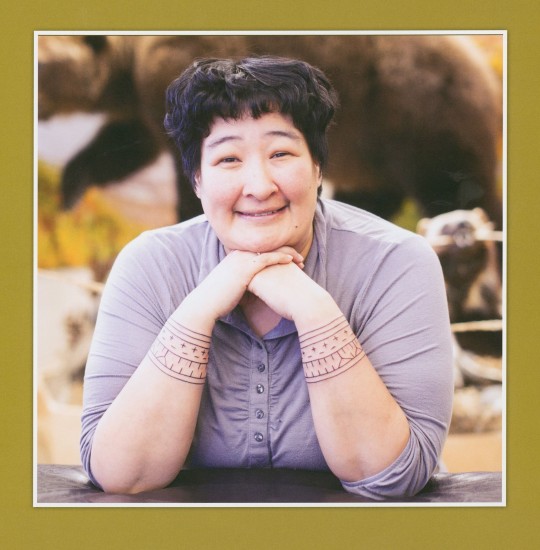
Doreen Ayalikyoak Evyagotailak: "I have thought about getting traditional tattoos since I was a teenager. . . . When I asked the elders if I could have my own meaning for my tattoos, they said it wouldn't matter. My tattoos symbolize my kids."
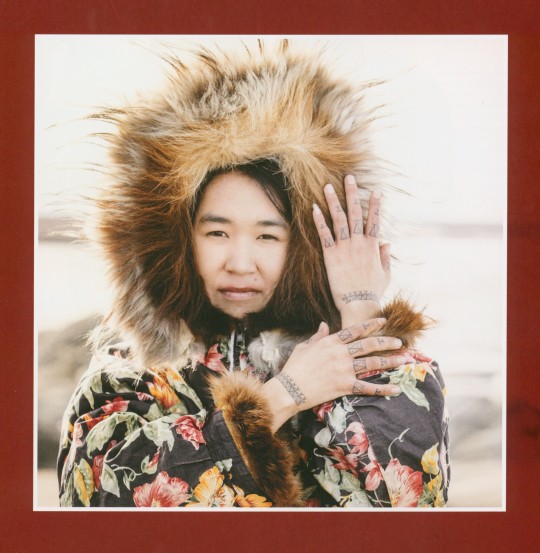
Mary Angele Takletok: "I always wanted traditional tattoos like the women in the old days. I wanted them on my wrists and my fingers so I could show I'm Inuk."

Melissa MacDonald Hinanik: "As a part of celebrating my heritage and revitalizing important traditional customs that form my identity, I believe I have earned my tattoos. I am a beautiful, strong young woman. I am a mother, a wife, a daughter, a friend, and an active community member. I reclaim the traditional customs as mine, I re-own them as a part of who I am."
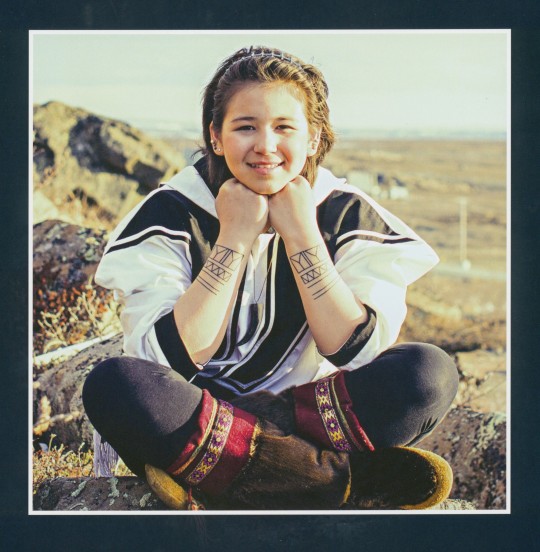
Star Westwood: "We still have some of our culture, but some things are slowly dying. Having tattoos helps us keep our culture alive. . . . . My tattoos represent my dad and my dad's dad. The ones closest to my wrists represent my sisters."
------------------------------------------------------------------------------
National Tattoo Day
July 17 is National Tattoo Day. To celebrate, we present some images from Reawakening Our Ancestors' Lines: Revitalizing Inuit Traditional Tattooing, compiled by Angela Hovak Johnston, co-founder with Marjorie Tahbone of the Inuit Tattoo Revitalization Project, with photographs by Inuit photographer Cora DeVos, and published in Iqaluit, Nunavut by Inhabit Media Inc. in 2017.
For thousands of years, Inuit have practiced the traditional art of tattooing. Created the ancient way, with bone needles and caribou sinew soaked in seal oil, sod, or soot, these tattoos were an important tradition for many Inuit women, symbols etched on their skin that connected them to their families and communities. But with the rise of missionaries and residential schools in the North, the tradition of tattooing was almost lost. In 2005, when Angela Hovak Johnston heard that the last Inuk woman tattooed in the old way had died, she set out to tattoo herself in tribute to this ancient custom and learn how to tattoo others. What was at first a personal quest became a project to bring the art of traditional tattooing back to Inuit women across Nunavut.
Collected in this book are photos and stories from more than two dozen women who participated in Johnston's project. Together, these women have united to bring to life an ancient tradition, reawakening their ancestors' lines and sharing this knowledge with future generations. Hovak Johnston writes: "Never again will these Inuit traditions be close to extinction, or only a part of history you read about in books. This is my mission."
Reawakening Our Ancestors' Lines forms part of our Indigenous America Literature Collection.

Angela Hovak Johnston (right) with her cousin Janelle Angulalik and her aunt Millie Navalik Angulalik.
View other posts from our Indigenous America Literature Collection.
#National Tattoo Day#tattoos#holidays#Inuit traditional tattoos#Inuit tattoos#Inuit#Inuk#Reawakening Our Ancestors' Lines#Angela Hovak Johnston#Cora DeVos#Cora Kavyaktok#Marjorie Tahbone#Inuit Tattoo Revitalization Project#Inhabit Media Inc.#photographs#Inuit women#Indigenous America Literature Collection#Native American Literature Collection
3K notes
·
View notes
Text
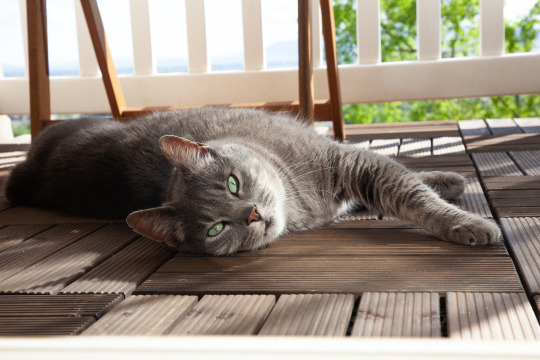
...the patio prince…the lord of lounge...
3K notes
·
View notes
Text

Soul Train Dancers at a photoshoot (1970s)
452 notes
·
View notes
Text

The Sand Mountain Banner, Albertville, Alabama, November 10, 1927
2K notes
·
View notes
Text




A skunk was foraging in my yard this morning, I’m so happy he stuck around! (Also had a staring contest with a squirrel)
(Photos taken by me on FujiFilm X-T30)
#animals#skunk#squirrel#skunks#Mephitis mephitis#striped skunk#photography#wildlife#wildlife photography#animal#animal photography#nature#nature photography#backyard#Ohio#USA#American animals#American nature#American wildlife#wild animals#photographs#fujifilm#photographer
887 notes
·
View notes
Text
Buy physical media. Buy CDs. Buy records. Buy tapes. Buy books. Buy physical artwork or prints. Take photos of yourself and get them developed at a photo processing booth. Write your thoughts down in a journal. Why? Because as this world get more digital, what's physical will slowly but surely disappear. There will be less things you can touch and feel, and more things that you can see and not touch. You can post all the digital pics you want on social media...nothing is assured and those pics and those platforms could be gone in an instant. An album on streaming platforms will never be the same as the original album in your hand with the liner notes, as versions of that album can get removed, and/or replaced with re-recorded material (since the artist doesn't own their masters). Books go out of print. And staring at a jpeg (no matter how much you paid for it *cough cough* NFTs) of an artwork will never be the same as owning the actual artwork or a print of it.
Preserve these things. If not for yourself, then for future generations.
#archiving#archives#physical media#records#cds#music cds#vhs tapes#vhs#dvd#dvd collection#photographs#photos#photography#books#books & libraries#literature#digital media#art#painting#art prints
2K notes
·
View notes
Text

#wildlife photography#beautiful photos#photograph#picture#photoshop#photoshoot#my photos#wonderful#photography#wild animals#cute animals#animal#art#photo#wildlife#photograhy#photographs
432 notes
·
View notes
Text








Pokemon Manhole Covers in Japan
#pokemon#japan#nintendo#gaming#anime#video games#pikachu#bulbasaur#squirtle#charmander#gameboy#gba#ds#3ds#switch#nintendo switch#pokemon let's go#pokemon go#pokemon scarvi#90s#retro#tokyo#travel#photographs#photos#cute#art#illustration#nostalgia#retrogaming
769 notes
·
View notes
Text
Civil War in Focus – Mathew Brady’s Photography 🎩🥁
A century before smartphones, Mathew Brady and his team pioneered war photography. Brady (1820s–1896) organized dozens of photographers to document the Civil War – from bloody battlefields to stoic portraits. The National Archives holds thousands of these glass-plate images in the Brady collection (many originally War Dept records).

Brady’s photographs fundamentally changed how the public saw war. For the first time, civilians could see the reality of camp life, the aftermath of battles, and the faces of soldiers.

President Lincoln credited Brady’s portrait of him at Antietam with helping win re-election in 1864 (saying "Brady and the Cooper Union speech made me President.")

Brady’s crew didn’t just photograph battlefields but everyday stillness and the daily grind of camp life for soldiers and crew.

Field kitchens were a favorite Brady subject – this rare stereo image shows Army cooks preparing stew in big cauldrons over fire pits.

Mathew Brady’s photographs are freely accessible in NARA’s Catalog. See faces of named soldiers, panoramic ruins of Richmond, or the eerie stillness of Antietam right after the fight. It’s a 160-year-old visual archive that still speaks volumes about honor, sacrifice, and the birth of photojournalism.
#Mathew Brady#Photography#Photographer#Civil War#Abraham Lincoln#National Archives#Photographs#Military#Civilians
198 notes
·
View notes
Text


285 notes
·
View notes
Text











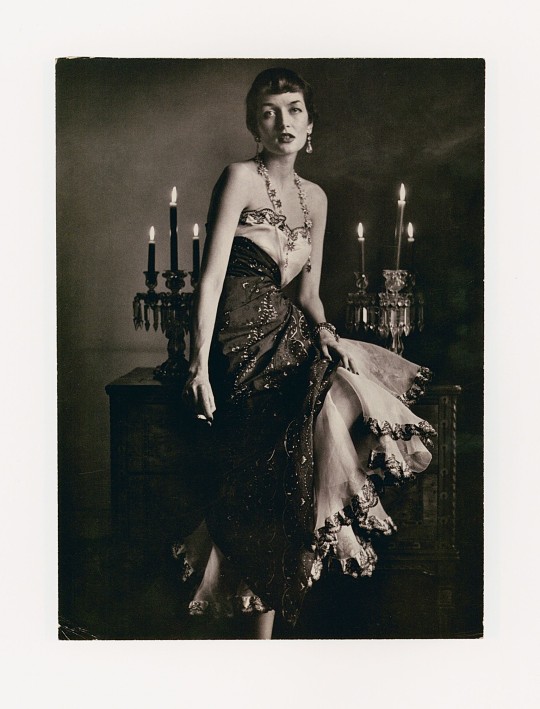
BLACK HISTORY MONTH: Celebrating Artist Gordon Parks!
In a 2001 interview with the oral history project The History Makers, American photographer and filmmaker Gordon Parks (1912-2006) was asked to define his profession: “I think I was an artist,” he says, “photographer, writer, painter, poet, film director, and a lover.” He laughs. “Renaissance man. That’s what we call a lover” He might’ve added musician, composer, and documentarian. Parks was born in Kansas in 1912, left home at fifteen after the death of his mother, played piano and sang in brothels for money, worked in a Chicago flop house after the stock market crash, and found himself inspired by FSA photographs in the 1930s. After receiving work as a commercial photographer, he won a Julius Rosenwald Fellowship for his work documenting Chicago’s South Side, and was invited to join the Farm Security Administration himself.
The photographs highlighted here are drawn from his work at this early point in his long and dynamic career. They are reprinted in the 2018 book Gordon Parks : The New Tide, Early Work, 1940-1950, edited by Philip Brookman, consulting curator of photography at the National Gallery of Art. The book captures Parks’ work in and out of commercial photography, government projects, celebrity profiles, and his early years with LIFE magazine – where he would work until it stopped monthly publication in 1972. Parks was known for earning the trust of his subjects, and not betraying it. In a remembrance of Parks by one of his former editors at LIFE, Barbara Baker Burrows recalls Parks’ charm, and the confidence he earned, whether he was capturing foreign militaries, street gangs, celebrities, or civil servants. Parks died in 2006 at the age of 93.


For more about Gordon Parks and his legacy, visit The Gordon Parks Foundation.
See more Black History Month posts.
--Amanda, Special Collections Graduate Intern


#Black History Month#Photography#Gordon Parks#Philip Brookman#Black History#Photographers#LIFE Magazine#Renaissance Men#African Americans#photographs
361 notes
·
View notes